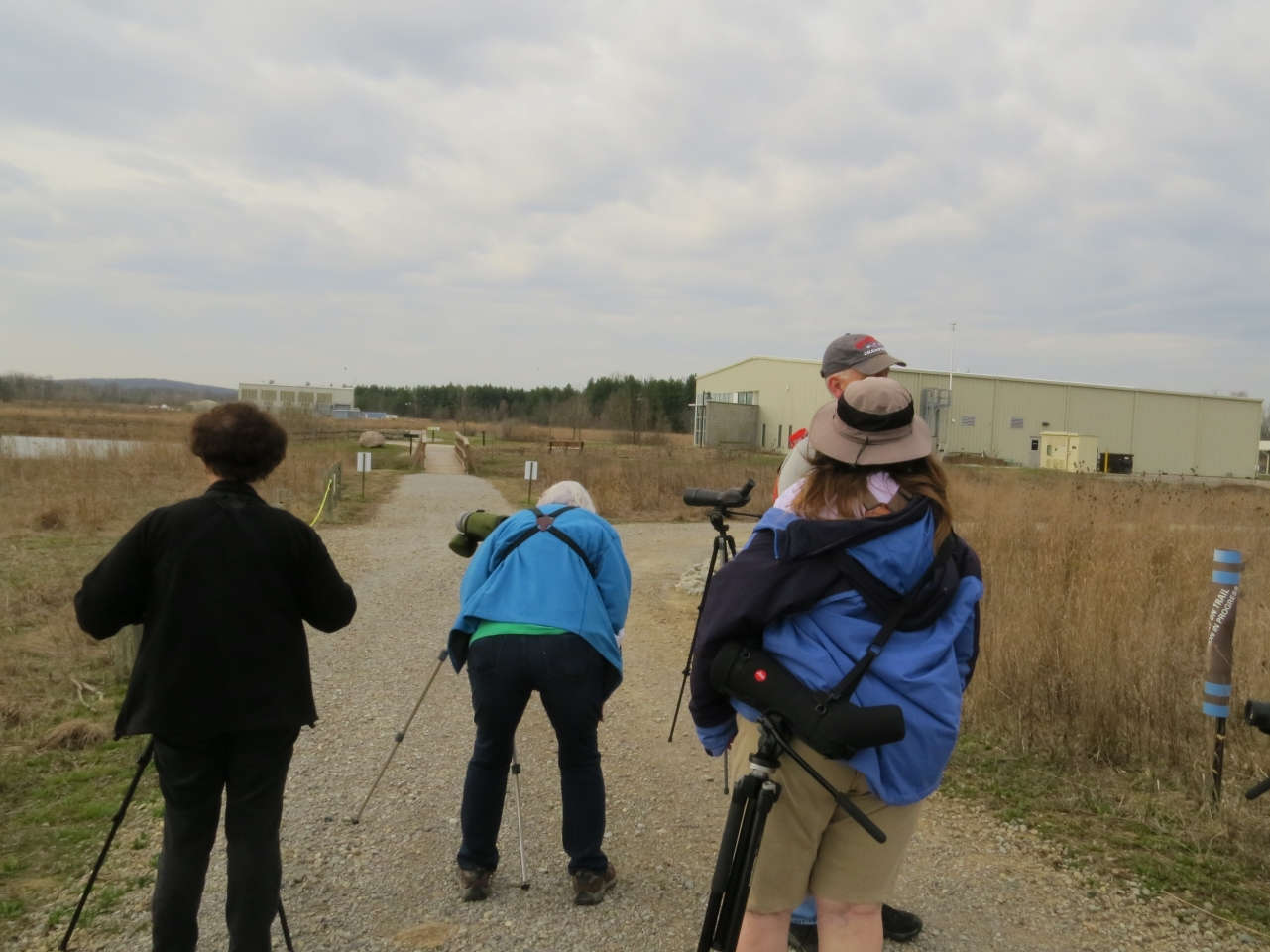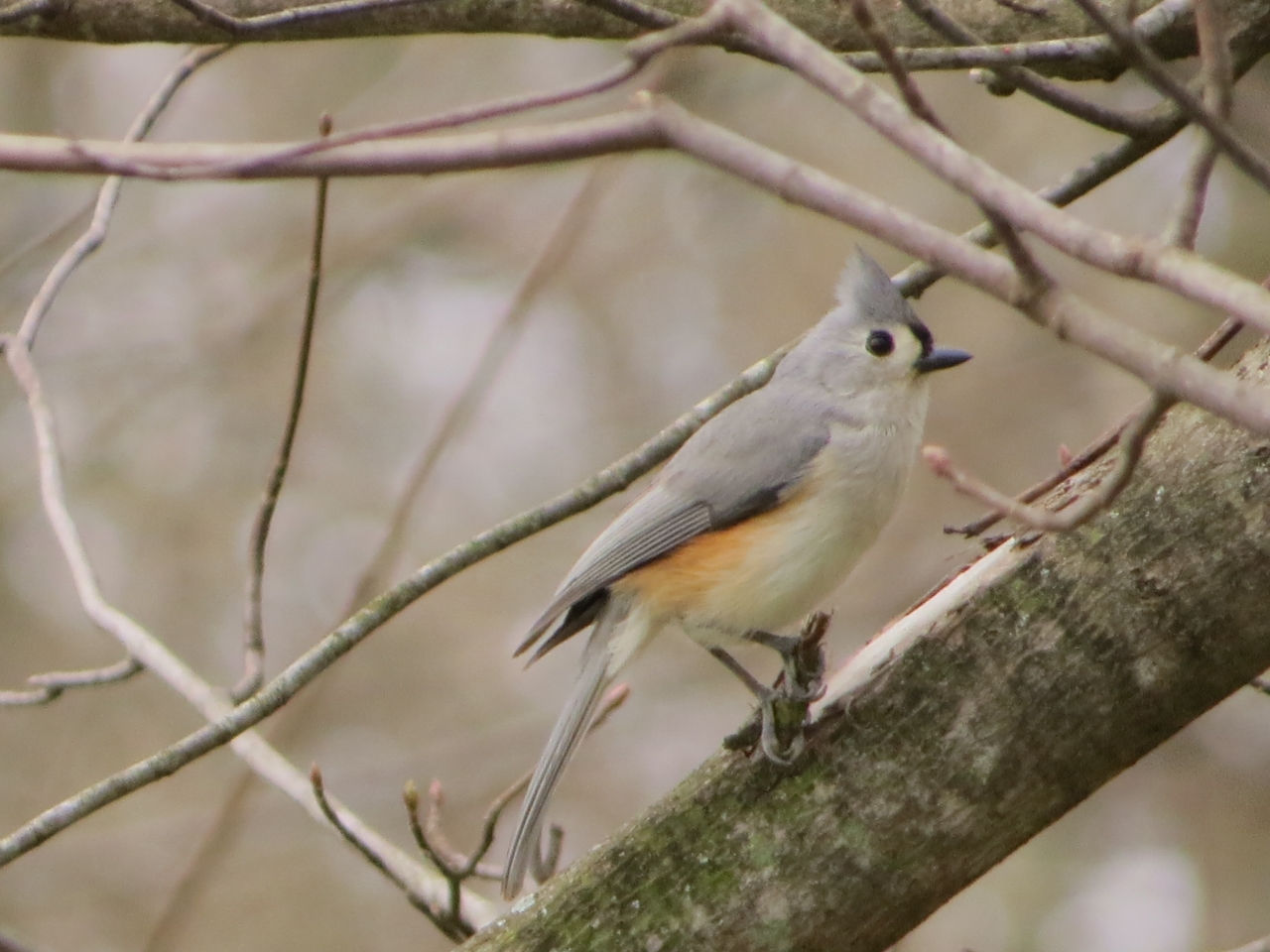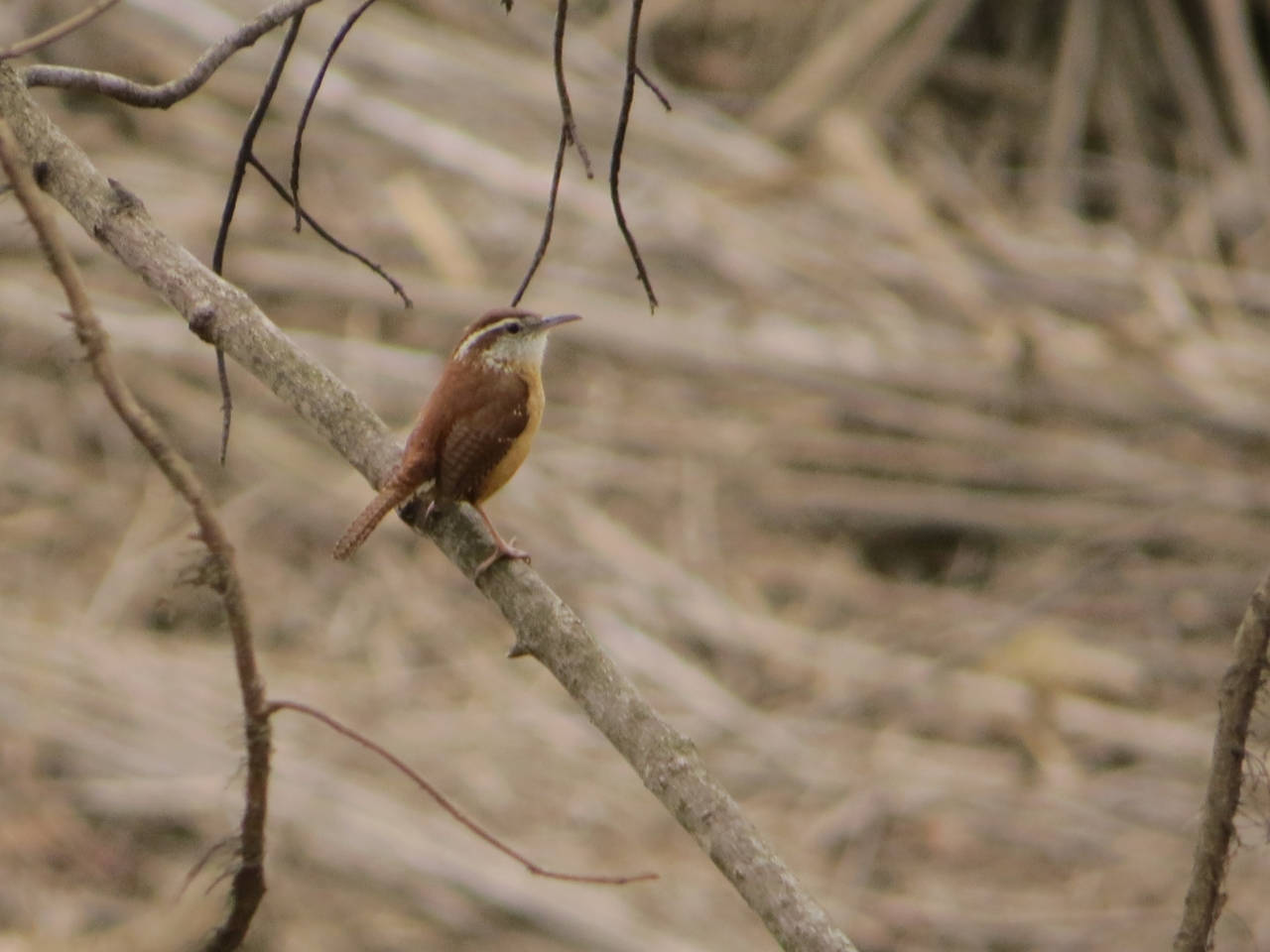For my first field trip as the solo leader, I decided to have us meet at the Grange Insurance Audubon Center (GIAC) and head south, which promised better weather than the northern areas of the state — and perhaps more migrants. After leaving the GIAC with eight hardy early-risers, we picked up a ninth participant at the first “caffeination station”, otherwise known as McDonalds.
This trip had no specific target birds; we just planned to survey the areas to see what was there.
Our first stop, Fernald Nature Preserve, was once a cold-war weapons manufacturing facility, now converted to a nature preserve. We were greeted by White-crowned Sparrows as we pulled into the parking lot. The ponds held a nice variety of waterfowl including Gadwall, Wood Ducks, American Wigeon, Redhead, Ring-necked Ducks, Blue-winged Teal, Northern Shoveler, Bufflehead, Ruddy Duck and Hooded Merganser. We also spotted several flying Wilson’s Snipe, and a Brown Thrasher and Field Sparrow were a first-of-year species for many. A Savannah Sparrow and an Eastern Meadowlark both posed for photos.
Our next stop, Armleder Park in Cincinnati, was a new destination for all of us. As we walked out to the wetland area, we observed a flock of sparrows which included both Vesper Sparrows and a lone Savannah Sparrow. Greater Yellowlegs, Killdeer, and Wilson’s Snipe were on the wetlands as well, which should be good for shorebirds as migration continues.
After lunch at Wendy’s, we conducted a purse check to end the tradition of leaving a purse behind. [Editor’s note: see our February trip report for background on that inside joke.] We then stopped at the visitors’ center at Caesar Creek on Harveysville Road but found the birds to be sparse. One distant Common Loon was seen by a few.
The lure of attempting a chase took over so, we headed for Deer Creek Sate Park to relocate the Red-throated Loon which was still being seen that morning. Marching out onto a sand spit, we found the bird as we looked across the reservoir. Here we also saw Horned and Pied-bill Grebes, along with Ruddy Ducks, Lesser Scaup, and Red-breasted Mergansers. An Osprey catching a fish was another highlight, but we searched in vain for shorebirds other than Killdeer.
On returning to GIAC, a few of us found that we still hadn’t had enough birding — only 12 hours, after all. So we checked the nearby Scioto River and discovered lots of Great Blue Herons, a few Great Egrets, and some Wood Ducks.
The day had been a beautiful one, with temperatures in the 60s and low 70s. A good day, good people, and good birding!
Canada Goose
Mute Swan
Wood Duck
Gadwall
American Wigeon
Mallard
Blue-winged Teal
Northern Shoveler
Green-winged Teal
Redhead
Ring-necked Duck
Lesser Scaup
Bufflehead
Hooded Merganser
Red-breasted Merganser
Ruddy Duck
Common Loon
Red-throated Loon
Pied-billed Grebe
Horned Grebe
Double-crested Cormorant
Great Blue Heron
Great Egret
Black Vulture
Turkey Vulture
Osprey
Northern Harrier
Cooper’s Hawk
Red-tailed Hawk
American Coot
Killdeer
Wilson’s Snipe
Greater Yellowlegs
Ring-billed Gull
Mourning Dove
Belted Kingfisher
Red-bellied Woodpecker
Downy Woodpecker
Northern Flicker
American Kestrel
Eastern Phoebe
Blue Jay
American Crow
Horned Lark
Tree Swallow
Carolina Chickadee
Tufted Titmouse
White-breasted Nuthatch
Carolina Wren
Eastern Bluebird
American Robin
Brown Thrasher
Northern Mockingbird
European Starling
American Tree Sparrow
Chipping Sparrow
Field Sparrow
White-crowned Sparrow
Vesper Sparrow
Savannah Sparrow
Song Sparrow
Northern Cardinal
Red-winged Blackbird
Eastern Meadowlark
Common Grackle
Brown-headed Cowbird
American Goldfinch
House Sparrow





